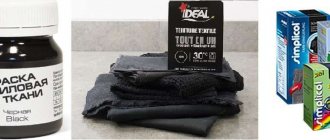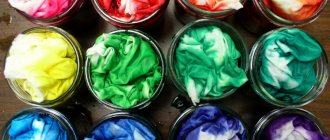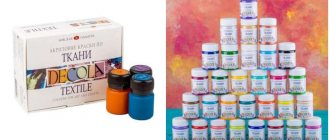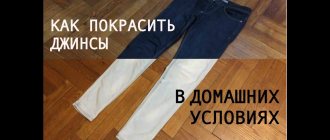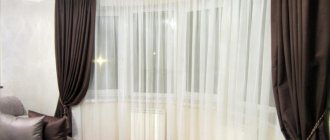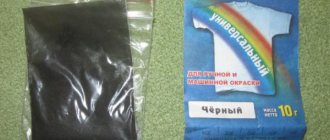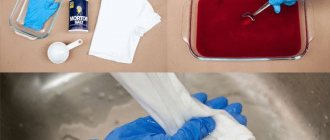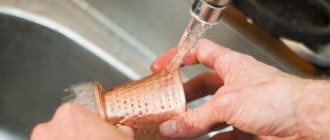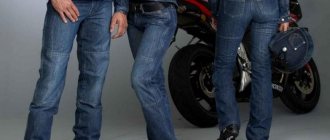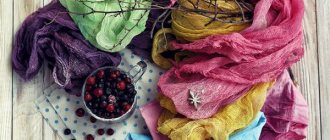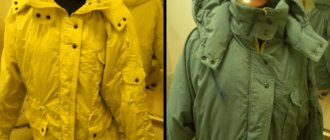Another name for fucorcin is “Castellani paint”. When using the product to dye fabric, mix 10 ml of alcohol solution with 5 liters of water in a container and place the textile product there. Leave for half an hour, periodically turning over and checking the shade. The painting process consists of the following steps:
- Make a solution consisting of 80 g of potassium permanganate, 135 ml of 9% vinegar and 30 ml of 3% hydrogen peroxide.
- Mix the solution with water in a 1:2 ratio.
- Twist the trousers into a rope and secure the current position with ropes.
- Soak the jeans in the prepared mixture for 20 minutes.
Oct 11 2022
How to dye fabric using beets?
When dyed with beetroot, the fabric does not take on as intense a red color as one might expect. Run the beets through a juicer and then use the juice to color them. The result is quite subtle hints of salmon and apricot. A beautiful pink color can be achieved using hibiscus flowers.
Interesting materials:
What factors influence the location of agriculture? What films are considered science fiction? What films are coming out in March 2022? What fruit trees can be planted in spring? What fruits ripen at home? What fruits and vegetables do budgies like? What fruits and vegetables should dogs not eat? What fruits do Kakariki like? What are the functions of the essence? What are the functions of the Xiaomi fitness bracelet?
Dyeing silk with potassium permanganate
| Medea Reg.11/12/2003 Message | I really need advice. There is natural silk, produced by Red Rose, in a rather rustic color. It’s been lying around in the closet for four years, the design suits me in principle, but the color... After reading about the method of dyeing natural silk with potassium permanganate, I decided to experiment. Painted it. It turned out very beautiful. Initially, the fabric had white flowers and grass on a lilac background. The resulting flowers were beige-golden in color against a complex lilac background. Overall, it's beautiful. Many questions arose. How will the fabric behave in the future? Will she shed a lot? Will it leave marks on the skin and underwear? Is this dyeing dangerous for the skin? Is it possible to store a dyed blouse with other light-colored blouses in a closet without fear of dyeing? |
| Mai Reg.02.04.2005Comm.4517 Awards: 1 | If it is still relevant, then you can check the shedding with practice - wash the piece in cold and hot water. Dry shedding is checked by holding a piece of fabric wrapped in a white cloth for a couple of days somewhere under the bed linen (so that there is a press, but not books). The moment when stains are left is also checked. But I don’t know about the skin. But in general, potassium permanganate burns through the tiles in the bathroom... Personally, I was somehow convinced... But they gargle with it... How strong did you make the solution? In terms of square decimeters... |
| Taira Reg.10.19.2005Message.1837 | Medea, actually potassium permanganate, is a very strong oxidizing agent, it is even stored separately from other reagents. Silk is a fairly delicate fabric, you could simply burn it and then the fabric will begin to fall apart. What concentration did you have in the mahogany solution? At least how much potassium permanganate did you take and in what amount of water did you dilute it? |
| Medea Reg.11/12/2003 Message | Thanks for the recommendations. I dyed the silk in a rather intense solution of potassium permanganate, an intense dark fuchsia color, but transparent, the bottom of the basin in which I dyed was visible. It's fun to paint. You dip the fabric into intensely colored water and take it out of almost transparent water; the fabric absorbs all the potassium permanganate. Today I washed it again in fairly hot water (40 degrees) and with powder, the color has not changed, well, maybe a little. It’s a pity that no one has experience in dyeing with potassium permanganate. I was hoping to find out what would happen to the fabric next and whether it was worth sewing something out of it. Although I still don’t have time to sew, I’m looking for a new job. |
| Svit Lana Reg.06/01/2007 Message 110 | undissolved grains of potassium premanganate are dangerous, but a solution of potassium permanganate in water, when completely dissolved, is practically safe, the slightly pink solution can be taken orally, washing the stomach, in case of food poisoning. I can’t say anything precise about the color of the fabric, the only thing is that the tensile strength of the fabric has weakened. |
club.osinka.ru
Recommendations for dyeing clothes and tulle:
- The most important and main advice. Before you start directly painting clothes, weigh the pros and cons. Amateur painting is always a risk.
- Know the composition of the fabric, because the entire painting result depends on the composition of the fabric:
- if the fabric is natural, for example: cotton, linen, denim, then, as a rule, dyeing goes well;
- if the fabric is mixed, the color will come out a little paler, for example, it will not be blue, but light blue.
- if the fabric is 100% synthetic, there is a very high risk that the fabric will not dye at all, because with synthetic fabrics, the paint flows off like cellophane, and the product will remain exactly the same shade as before dyeing.
Important! Please note that, unfortunately, at the moment there are more and more cases when the composition that is written on the label does not coincide with reality.
- Decide on a color. We recommend dyeing in colors that are slightly darker than the original shade of the fabric. For example, blue is best painted blue or dark blue. Also, do not forget to take into account the original shade of the item. The ideal option is if they are similar colors. But if you dye white jeans black, you will end up with gray or dark gray, but not black.
- Only judge the final shade on a thoroughly dried dyed item, because wet items are always darker.
- If color is very important to you, dye a test piece of fabric that will be the same in composition, dry it and look at the result.
- If you don’t like the shade of the paint you prepared, it’s better not to risk it. In industrial conditions, shades of paint are tested a large number of times, achieving the required color. At home, you only have 1 try.
- Paint only with gloves on. Wear gloves before opening the paint package if you decide to use an industrial solution rather than the options we offer. When working with medical solutions, also do not ignore gloves, so as not to think later about how to wipe off brilliant green or potassium permanganate from the skin.
- Paint items according to the instructions written on the packaging when using industrial dyes.
Dyeing fabric with improvised means at home. Master Class
Fukortsin is a medicine. But today we will use it for other purposes. If you like to create exclusive things with your own hands, then you may need such a useful skill as dyeing fabrics at home.
Fukortsin is often called Castellani paint. Indeed, since it allows you to dye things crimson, and the longer you keep the fabric in fucorcin, the more saturated and dark the color will be.
Fukortsin stains fabric instantly. When preparing a coloring solution, everything depends on the material being painted and the desired color saturation.
Materials, equipment and tools:
- An item that needs to be painted.
- Pan (container).
- Water 5 l.
- Fukortsin 10 ml.
- Vinegar 6% 1 bottle.
- Metal tray.
Step 1 Pour water into the pan: approximately 5 liters of water per 10 ml of fucorcin.
Step 2 When preparing a dye solution, everything depends on the material being painted and the desired color saturation. We pour out the bottles of fucorcin. Mix everything.
Step 3 We lower the item into the water, in our case a robe. The time it takes to dye depends on the intensity of the color you need. If the color of the solution is not saturated enough and you want to add more dye, then you need to remove the item to be dyed from the container with the dye and add the required amount of fucorcin. If you do not do this, the item may not be completely painted, but in spots.
Step 4 You need to fix the result with a solution of 9% vinegar and water (3 liters of water per 100 ml of vinegar). Pour water into a basin, observing these proportions, and lower the robe into the water for about 15 minutes. If you partially dye the fabric, then carefully dip only the dyed part into the vinegar solution, since the water immediately becomes slightly colored. If part of the fabric that you do not want to dye gets into the water, it will stain and turn pale pink. Then take it out, wring it out and iron it through a thin cloth (or gauze).
LiveInternetLiveInternet
- Registration
- Entrance
—Categories
- ***MY. (122)
- My knitting (48)
- My kitchen (3)
- My sewing (9)
- My cat (Peach) (9)
- Videos, MK, tips, lessons (110)
- LiveInternet (80)
- LiRu-educational program (20)
- Mastering the computer (17)
- Diary design (15)
- Types of knitting (746)
- "Pineapple" (16)
- "Lily" (35)
- "Leaves" (47)
- Jacquard (14)
- Illusion knitting (6)
- Yoke, raglan (106)
- Braids, arans, plaits (124)
- Ribbon lace (16)
- Missoni(crochet) (42)
- Missoni(knitted) (13)
- Sirloin knitting (160)
- Sirloin knitting 2 (122)
- Types of knitting - “Motifs” (293)
- "African Flower" (16)
- "Granny Square" (38)
- Ideas (27)
- Models with descriptions (164)
- Motives+schemes (45)
- Knitting for adults (1652)
- Craftswomen with LiRu (31)
- Evening dresses (49)
- Knitting for men (116)
- Knitting+fabric (53)
- Hats (130)
- Designer models (57)
- Lace, border, collars (69)
- Mittens-socks-shoes (50)
- Blankets, pillows, rugs (162)
- Napkins-tablecloths-curtains (146)
- Bags (121)
- Decorations, flowers (103)
- Scarves, shawls, stoles, snoods (108)
- Japanese openwork (374)
- Knitting for children (661)
- . undisassembled. (69)
- for girls (175)
- for children under 1 year (58)
- for boys (135)
- magazines, websites (22)
- toys, etc. (5)
- ideas (10)
- shoes, etc. (59)
- blankets, etc. (54)
- hats, etc. (91)
- Knitting.Women's clothing (crochet) (204)
- Sleeveless vest, vest, etc. (12)
- Blouses, pullovers, etc. (65)
- Coats, cardigans, jackets (71)
- Dresses, suits, tunics (55)
- Knitting.Women's clothing (knitting needles) (784)
- Vest, bolero, sleeveless vest (63)
- Blouse, pullover, sweater (434)
- Coats, cardigans, jackets (160)
- Dresses, suits, tunics (125)
- Knitting. Summer is coming! (859)
- Boleros, jackets (122)
- Set (10)
- Blouses, tops (268)
- Men (6)
- dresses, sundresses (186)
- beachwear (38)
- tunics (134)
- Hats, umbrellas (30)
- skirts (62)
- Knitting.Knitting tips (417)
- types of yarn (13)
- MK hook (65)
- master classes (well, a lot. ) (32)
- MK knitting needles (164)
- crochet patterns (60)
- knitting patterns (81)
- For the soul. (126)
- A. Celentano. ))) (12)
- Vera (21)
- All for the party! (9)
- Birthdays-weddings-anniversaries (15)
- Let's relax! (2)
- Parables, stories, poems (16)
- Everyone watch. (7)
- This is interesting! (19)
- House-garden-vegetable garden (934)
- *** (2)
- all about indoor plants (71)
- we protect and fertilize. (145)
- interior (3)
- landscape design (53)
- vegetables:eggplant (9)
- vegetables: cucumbers (67)
- vegetables: pepper (9)
- vegetables:various (27)
- vegetables: tomatoes (62)
- vegetables:garlic (10)
- vegetable garden on the windowsill (20)
- useful tips (82)
- natural farming (68)
- vegetable seedlings (24)
- flower seedlings (9)
- garden flowers (49)
- fruits: apricot, peach (6)
- fruits: quince, etc. (3)
- fruits: cherry plum, plum (3)
- fruit:cherry (12)
- fruits: apple, pear (26)
- conifers, shrubs (12)
- bulbous flowers (1)
- perennial flowers (26)
- annual flowers (21)
- flowers - petunias, calibrachoa (16)
- rose flowers (41)
- eustoma flowers (1)
- berry:grape (26)
- berry: honeysuckle, etc. (7)
- berry:strawberry-strawberry (52)
- berry: raspberry, blackberry (30)
- berry: currant, gooseberry (7)
- Magazines and books on needlework (249)
- Asian magazines-1 (48)
- Asian magazines-2 (44)
- Knitting is your hobby (2)
- Fashion Magazine(1) (50)
- Fashion Magazine(2) (13)
- Handicraft books (8)
- Miscellaneous. (31)
- Sabrina (3)
- Health (693)
- . Let's exercise! (100)
- Children's health (14)
- Time-tested medicines (41)
- medicinal plants (53)
- we are being treated. (77)
- we bring beauty. ))) (192)
- healthy products (124)
- useful tips (80)
- We're losing weight. (29)
- Cooking (1309)
- Albums and magazines on cooking (4)
- Pancakes, donuts, bread, etc. (33)
- Oriental sweets (5)
- hot dish (66)
- cook from cereals (4)
- dessert, cookies (180)
- preparations for the winter (jam, etc.) (10)
- preparations for the winter (marinades, etc.) (66)
- preparations for the winter (salads, etc.) (86)
- preparations for the winter (sauces, etc.) (50)
- Korean cuisine (20)
- cooking tips (36)
- Easter cakes, cupcakes, etc. (29)
- Chicken dish (33)
- Meat dish (13)
- hastily. (113)
- drinks (11)
- Dumplings, manti, dumplings, etc. (10)
- Pies, pies (97)
- Pizza, Ossetian pies, placinda, etc. (29)
- Festive table (73)
- Recipes from Stalik Khankishiev (4)
- Fish dish (8)
- salads (96)
- Samsa, pasties, khachapuri, etc. (57)
- Sauces, seasonings, cheeses (29)
- Cake, pastries (132)
- cold appetizers (meat) (59)
- cold snacks (vegetables) (33)
- cold appetizers (fish) (52)
- Crazy hands ))) (3)
- Useful sites (10)
- Useful tips (120)
- Online stores (4)
- clean house (90)
- Thrifty housewife (16)
- Child development (5)
- Handicrafts (38)
- Handmade (136)
- decoupage (2)
- toys (30)
- gift ideas (29)
- various techniques (11)
- flowers made of fabric, leather, ribbons (21)
- Film library (14)
- Cinema (3)
- Cartoons (8)
- Television (3)
- Sewing is beautiful and easy! (404)
- Boho style (119)
- Evening dresses (15)
- Patterns, modeling and MK (174)
- Children (29)
- For home (16)
- The art of dressing well (30)
- Essential tips (13)
- Rework (18)
- Bags (26)
- Curtains (103)
- Video MK (7)
- Patterns, patterns (21)
- Curtain decor (10)
- The beauty of windows (17)
- Master classes (43)
- Sites, links (7)
—Quote book
Methodology for increasing immunity and cleaning by doctor Oleg Patrushev.
Nicotinamide cures cancer. Seg. TOPIC-BOLERO USING FILLET TECHNIQUE TOPIC-BOLERO USING FILLET TECHNIQUE
BLUE JUMPER WITH “BUNES” ON A ROUND YOKETTE. HOOK
Beautiful pullover made by Master Olga Belova
—Applications
- MediaMetrics
Latest news quotes - Postcards
Reborn catalog of postcards for all occasions - Cheap flights
Favorable prices, easy search, no commission, 24 hours. Book now - pay later! - I am a photographer
Plugin for publishing photos in the user's diary. Minimum system requirements: Internet Explorer 6, Fire Fox 1.5, Opera 9.5, Safari 3.1.1 with JavaScript enabled. Maybe it will work - Rating buttons "Yandex.blogs"
Adds Yandex rating buttons to the profile. Plus, graphs of rating changes per month will appear soon
-Video
-Always at hand
—Search by diary
—Subscription by e-mail
The process of painting tulle and clothes with brilliant green
When dyeing light-colored products with green, the color will turn out green. The saturation of the tone depends on the added consistency of the drug and the time the clothes to be dyed are kept in the solution, so before carrying out the procedure it is necessary to think through all the details.
If fabrics are exposed to a mixture of a highly concentrated product in large quantities, they will turn dark green. If you keep them for a long time, it will become much darker. In a weak solution, the products will be pale greenish.
Before the procedure, textile fabrics, tulle or clothing are washed and dried. They must be clean and free of stains. Running water is heated to room temperature +26…+30°C. A short, wide in diameter, old, unnecessary container is suitable for processing the material; at the end of the process, it may lose its color.
Before painting, the tulle must be washed and dried.
You need to dye textile items with your own hands as follows:
- Pour warm water into the container.
- Wear gloves.
- Add the previously prepared 1% alcohol solution of brilliant green. The composition is determined independently. According to practical information, to obtain a good result, use 10-20 ml of medical product per 5 liters of water. If the product is large, for example nylon mesh or tulle, the proportions are increased.
- Stir the liquid well until it has a homogeneous consistency; you can strain it through cheesecloth.
- Place the wet material to be painted into the working solution. If there are several items, they are processed separately.
- Periodically turn them over in containers, distribute the folds.
- Leave for 20-30 minutes.
- Rinse in a weak solution of table vinegar or in cold water with added salt or soda. This will help fix the color and keep it for a long time.
- Evaluate the result on a dry cloth. Wet materials are much darker.
Pay attention to: How to dye pants black at home
The method of using brilliant green for painting is considered simple, safe, environmentally friendly and economical. It does not take much time or labor, and the costs are minimal.
When the green effect is enhanced, re-dying is possible, and the fabric does not crack or tear after treatment.
How to paint canvas at home?
Lately, I have often started to come across information about dyeing fabric at home.
But indeed, for us needlewomen this topic is very relevant. In handicraft stores we often find a large selection of white canvas, and very rarely black or cream. If we need a colored base for embroidering a picture, then in order to find it, we will spend a lot of time and effort on it. Now I want to share with you about my experiences in painting canvas.
My mission is very simple. I would like to find out if we can paint the canvas well at home. To begin with, I started using dyes from the first aid kit, namely brilliant green, iodine and potassium permanganate. These products can be bought at the pharmacy, they are very cheap and are often used as dyes in everyday life.
All experiments were carried out on the Aida canvas of the Kirov PNK. Each piece of canvas was subjected to the following procedures:
painting canvas by immersion in a solution.
Fixed the color of the canvas in a vinegar solution
the next step is to embroider this sample with white threads
washing: put the painted canvas in warm water for about 5 minutes, then remove.
window: each piece in a file or under film and on a shaded window.
Painting the canvas with green:
Zelenka is an emerald green antiseptic solution. In production it is used as a dye for cotton and silk.
I painted the canvas in a glass container. I added brilliant green to the boiling water at the rate of 300 ml of boiling water per 2 ml of brilliant green. Pieces of canvas were placed there and soaked in the dye solution for 2, 5, 10 and 20 minutes. Next, the canvas was rinsed in warm water and soaked for 20 minutes in a vinegar solution: 1 liter of water per 2 tablespoons of vinegar. After this, the sample was embroidered with white threads, the fabric was again washed, ironed and sent to the window. Everything is indicated step by step in the table
Results after the experiments:
The color turned out to be not resistant to getting wet: after I washed the water and the embroidered motif became very stained. During embroidery, the floss threads turned greenish. And besides this, after the embroidery was on the window for about 4 months, the canvas became discolored and turned pale green, I found traces of intermittent coloring, although I did not initially observe this.
Painting canvas with iodine
Iodine is a yellow-brown disinfectant.
Painting the canvas with iodine followed the pattern of past experience. The first two parts hardly changed with the coloring time of 2 and 5 minutes. The canvas gradually turned purple-brown over 10 and 20 minutes. And now the most important thing: after I stroked it once, the canvas almost became the same, so I didn’t carry out the test further. All results are in the table.
Painting canvas with potassium permanganate.
The painting of potassium permanganate canvas was done by immersion in a solution. Add potassium permanganate powder to boiling water in the ratio of 100 ml of water and potassium permanganate powder on the tip of a knife and repeat the latter 2 times. Then the canvas was rinsed with warm water, dried, ironed and subjected to further experiments.
Potassium permanganate dissolved in water makes the solution raspberry-colored, but the canvas turned out to be the color of coffee with milk. From the table you will see that the time the canvas is kept in the solution will not greatly affect the color of the fabric. In order to obtain dark or light shades, you need to add more or less potassium permanganate powder to the water.
Unlike previous experiments, staining with potassium permanganate gave very good results. After I placed the canvas on the window for 4 months, the color of the canvas almost did not change. And by the way, the color is very resistant to getting wet. After embroidering and washing the embroidered piece, the threads were not dyed, but remained white. Among the disadvantages we can include the unevenness of coloring, but this problem can be solved if the coloring is carried out in a larger container.
